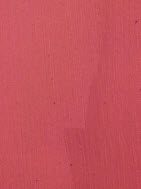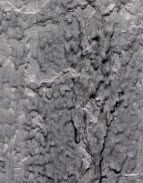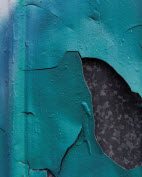Professional Solutions to Paint Failures
CertaPro Painters of Upper Charles, MA
Common Paint Failures
Paint failure takes many forms and has many causes. If not addressed, some of these conditions can cause further damage to the underlying materials, potentially creating even bigger problems. The specialists at CertaPro Painters® of the Upper Charles can identify underlying causes of paint failure, treat the problem, and make your property look and perform at its best. The examples below can help you identify and better understand the specific type of paint failure affecting your building.
Picture Framing
When corners and edges are cut in with a brush and end up darker or lighter than the rolled-on wall color, creating a picture frame effect. This can be caused by using a brush that produces a thicker film than roller or adding colorant to a non-tintable paint or using the wrong type or level of colorant. In order to prevent this problem, make sure to maintain similar spread rates with brushes and rollers. Don’t cut in the entire room before roller coating - work in smaller sections of the room to maintain a “wet edge”. Be sure correct colorant-base combinations are used and shake paint thoroughly at time of sale.

Wrinkling
Rough, crinkled paint surface occurring then paint forms a "skin". Causes of wrinkling can be from applying paint too thickly, painting a hot surface or painting in very hot weather, exposure of uncured paint to rain, dew, fog, or high humidity levels, application of top coat paint to insufficiently dried first coat, or inadequate surface preparation. Solutions included scraping or sanding substrate to remove wrinkled coating; then, repainting at the manufacturer's recommended spread rate. When painting during hot, cool, or damp weather, allowing extra time for the paint to dry completely can prevent wrinkling.

Burnishing
Burnishing occurs when there is an increase in gloss or sheen of paint film when subjected to rubbing, scrubbing, or having an object brush up against the paint. Causes included use of flat paint in highly trafficked areas, frequent washing and spot cleaning, furniture rubbing against the walls, or use of lower grades of paint with poor stain and scrub resistance. To prevent burnishing, use top quality latex paint for heavy wear areas that require regular cleaning (e.g., doors, window sills and trim). Use of semi-gloss or gloss in high traffic areas as well as spot-priming where necessary, before repainting with a top quality latex exterior paint, will also prevent burnishing.

Cracking & Flaking
Cracking and flaking occurs when dry paint film splits. This can be caused by use of lower quality paint which has inadequate adhesion and flexibility, over thinning paint or spread it too thin, poor surface preparation or failure to use primer, or painting under cool or windy conditions that make latex paint dry too quickly. If cracking does NOT go down to the surface, a solution can be to remove loose paint with a scraper or wire brush, sand to feather the edges, prime bare spots, and repaint. If cracking DOES go down to the surface, a solution can be to remove all paint by scraping and/or sanding; then, priming and repainting with a quality exterior latex paint.

Sagging
Paint sagging is the downward drooping of paint film immediately after application. This is caused by application of a heavy coat of paint, humidity and/or cool conditions, using over-thinned paint, or airless spraying with the fun too close to the surface being painted. Possible solutions include correcting unfavorable conditions: do not thin the paint, avoid cool or humid conditions, and sand glossy surfaces. If the paint is still wet, immediately brush out or re-roll to distribute the excess evenly. If the paint has dried, sand and reapply a new coat of top quality paint.

Alligatoring
Patterned cracking resembling the scales of an alligator. Alligatoring can be caused by application of an extremely hard, rigid coating, like an alkyd enamel, over a more flexible coating, like a latex primer, application of a top coat before the undercoat is dry, or natural aging of oil-based paints as temperatures fluctuate. To fix this type of paint failure, old paint should be completed removed by scraping and sanding the surface. To prevent alligatoring, prime the surface with high quality latex or oil-based primer; then paint with a top quality exterior latex paint.

Blistering
Blistering appears as bubbles resulting from loss or adhesion and lifting of paint film from the surface. This can be caused by painting a warm surface in direct sunlight, application of oil-based or alkyd paint over a damp or wet surface, seepage of moisture through worn caulk, roof area, or walls, exposure to dew, high humidity, or rain, shortly after paint has dried, or inadequate surface preparation. Solutions include identifying and repairing the source of moisture, removing blisters by scraping; then sanding and priming the bare surface with appropriate sealer, and repainting with a quality latex exterior paint.

Fading
Premature and/or excessive lightening of paint color, sometimes as a result of chalking is considered a fading paint failure. This can be caused by use of interior paint outdoors, lower quality paint, leading to rapid degradation (chalking) of the paint film, use of a paint color that is particularly vulnerable to UV radiation (most notably bright reds, blues and yellows), or tinting a white paint not intended for tinting, or overtinting a light or medium base. When fading is a result of chalking, it is necessary to remove as much of the chalk as possible. We recommend repainting with a quality exterior house paint in colors recommended for exterior use.

Galvanized Metal
Paint that has lost its adhesion to a galvanized metal surface. This can be caused by improper surface preparation, failure to apply a primer, or failure to sand based-on enamel finishes or glossy surfaces before painting. Solutions include removing rust with a wire brush and priming with an acrylic latex corrosion-inhibitive primer. Previously painted galvanized metal that is completely rust-free can be painted without applying primer. Latex metal primer should be applied to unpainted galvanized metal; then painted with a top quality exterior acrylic paint.



